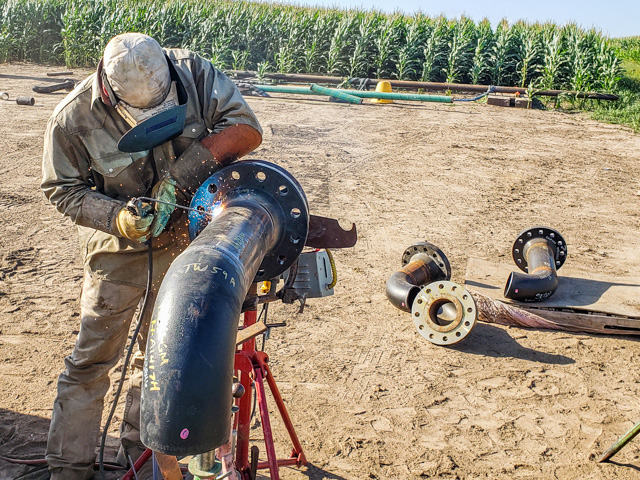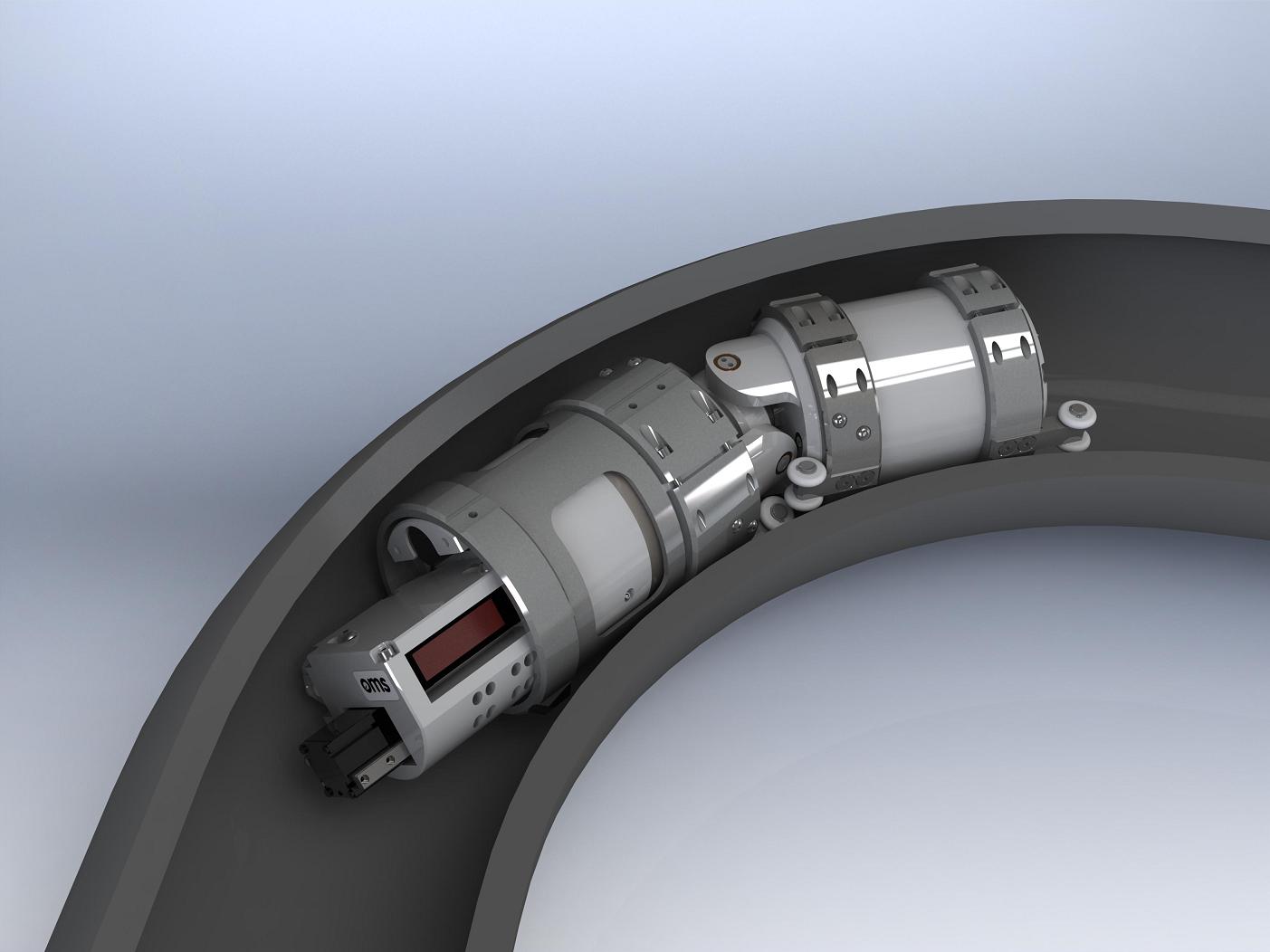Comprehensive Overview to Pipeline Welding Examination: Making Sure Honesty and Security in Pipeline Construction and Upkeep
The stability and security of pipes are paramount in today's infrastructure landscape, underscoring the vital duty of welding examination in pipe building and construction and upkeep. Pipeline Welding Inspection. The intricacies entailed in welding assessment raising pertinent inquiries about sector criteria and the developing modern technologies that may redefine these practices.

Value of Welding Assessment
Welding evaluation plays a crucial duty in making certain the stability and safety of pipe systems. It works as a basic process that confirms the high quality and reliability of welded joints, which are often one of the most susceptible factors in pipe building. Via methodical analysis, assessors can determine possible problems such as splits, porosity, and incomplete combination, which might compromise the architectural honesty of the pipeline.
The importance of welding assessment expands beyond simple conformity with industry requirements; it also safeguards public health and wellness and the setting. If failures take place, pipes carrying dangerous products pose substantial risks. Efficient examination procedures help avoid leakages and ruptures, mitigating ecological damage and securing areas. In addition, extensive examinations can boost the longevity of pipe systems, lowering the demand for pricey fixings and downtime.
Along with ensuring safety and security and conformity, welding examination cultivates a society of quality control within organizations. By focusing on inspection throughout the welding procedure, business can build a credibility for integrity and excellence, ultimately bring about raised consumer confidence and company possibilities (Pipeline Welding Inspection). Therefore, the relevance of welding evaluation can not be overstated in the context of pipe building and upkeep
Key Welding Procedures
Different welding procedures are utilized in pipe building, each with its very own advantages and applications. Amongst one of the most widely made use of methods are Secured Metal Arc Welding (SMAW), Gas Tungsten Arc Welding (GTAW), and Gas Steel Arc Welding (GMAW) SMAW is preferred for its flexibility and capacity to carry out well in numerous environmental conditions, making it ideal for field applications.
GTAW, usually described as Tungsten Inert Gas (TIG) welding, is recognized for its capacity to produce top notch welds with excellent control over warm input, making it excellent for thin-walled pipes and stainless steel products. GMAW, or Steel Inert Gas (MIG) welding, provides high deposition rates and is reliable for large projects, typically used in the fabrication of pipelines in controlled atmospheres.
In Addition, Immersed Arc Welding (SAW) is utilized for its deep penetration and high efficiency, especially in the building and construction of large-diameter pipes. Each of these processes adds to the general honesty and safety and security of pipeline constructions, allowing welders to select one of the most ideal method based on material kind, project needs, and environmental problems. Recognizing these key welding processes is necessary for effective pipeline welding examination.
Usual Flaws and Their Impact

Porosity, identified by small gas pockets entraped within the weld, weakens the material and can lead Going Here to leaks. Cracks, which may happen due to thermal tensions or improper air conditioning, can result and propagate in architectural failure under pressure. Damaging, where the base metal is deteriorated along the weld grain, decreases the effective cross-section of the pipe, boosting the risk of crack.
Incomplete blend happens when the weld metal does not effectively bond with the base metal, causing weak locations that may fall short under tension. Slag inclusion, the entrapment of non-metallic material within the weld, can also deteriorate the joint's stability. Recognizing and attending to these flaws early in the building process is critical to making sure the long-term dependability and safety and security of pipeline systems, consequently safeguarding both the framework and the environment.
Examination Techniques and Devices

Visual evaluation is the first line of defense, allowing assessors to recognize surface area abnormalities, misalignment, or other noticeable issues. Ultrasonic screening utilizes high-frequency acoustic waves to discover interior problems, supplying accurate deepness dimensions and defining defects without harming the weld. Radiographic screening uses X-rays or gamma rays to produce photos of the weld, making it possible for the recognition of internal gaps, splits, or inclusions.
Magnetic fragment screening is especially reliable for spotting surface area and near-surface stoppages in ferromagnetic materials. This technique includes applying an electromagnetic field and fine iron fragments to the weld, exposing issues with the accumulation of bits at flaw websites.
Along with these methods, specialized devices such as automated ultrasonic testing tools and digital radiography systems boost assessment precision and effectiveness, ensuring a thorough examination of pipe welds during building and upkeep.
Best Practices for Compliance
Abiding by ideal practices for compliance in pipe welding inspection is important for ensuring the integrity and security of the framework. Organizations must establish a detailed top quality management system that lines up with sector standards such as ASME, API, and AWS. This includes developing in-depth welding treatments that define the techniques, materials, and credentials required for welders.
Routine training and qualification of inspection personnel are necessary to keep high competency levels. Examiners ought to be familiar with various non-destructive testing (NDT) methods, including ultrasonic screening, radiographic screening, and aesthetic assessment, to successfully recognize possible flaws.
Paperwork plays an important role in compliance; keeping precise records of evaluations, weld procedures, and employees certifications assists to ensure traceability and liability. Set up audits and evaluations of welding practices need to be carried out to identify locations for enhancement and ensure adherence to developed protocols.

Verdict
In conclusion, the application of extensive welding inspection dig this protocols is critical for making sure the honesty and safety and security of pipe building and construction and upkeep. Continual renovation in inspection procedures will certainly add to the long life and integrity of pipe systems, emphasizing the essential duty of welding inspection in the sector.
The honesty and safety and security of pipes are vital in today's facilities landscape, highlighting the vital role of welding inspection in pipe building and construction and maintenance. Understanding these key welding procedures is necessary for efficient pipeline welding examination.
Sticking to finest practices for conformity in pipeline welding inspection is critical for making certain the stability and safety of the framework.In pop over here final thought, the implementation of strenuous welding evaluation protocols is extremely important for guaranteeing the integrity and safety of pipe building and upkeep. Continuous renovation in evaluation procedures will add to the longevity and integrity of pipeline systems, highlighting the critical duty of welding examination in the market.